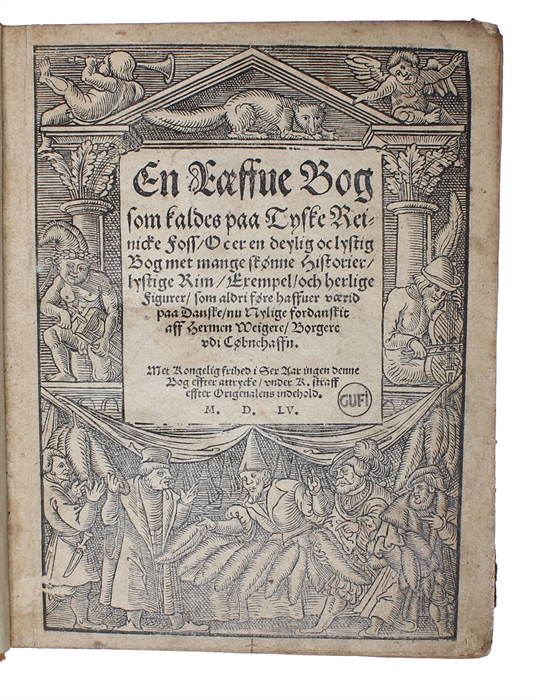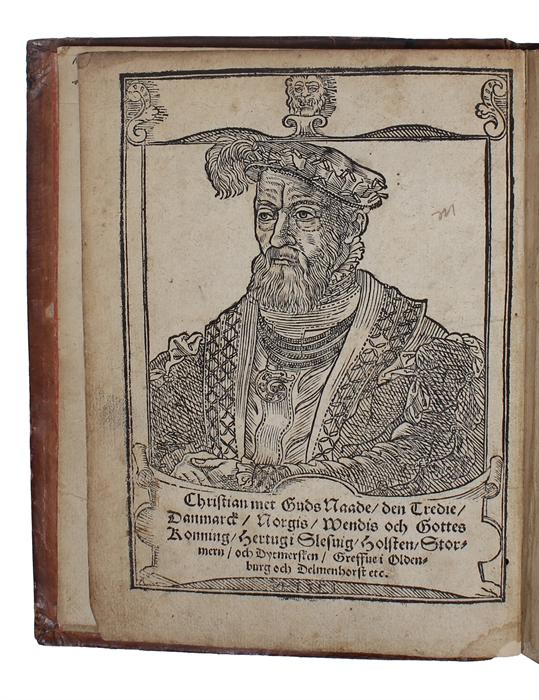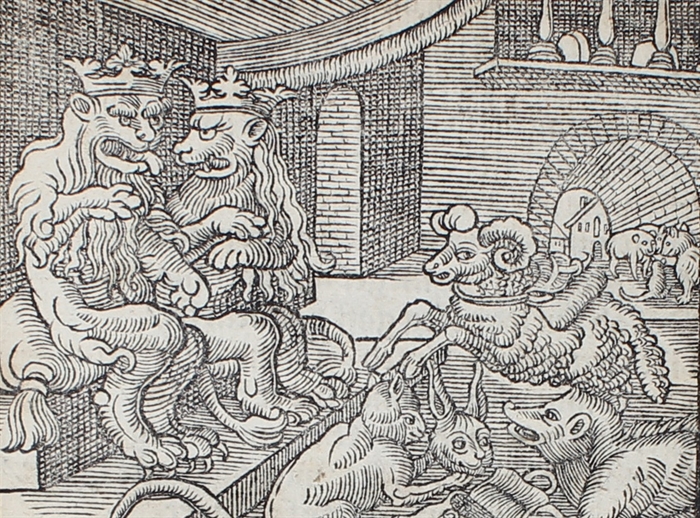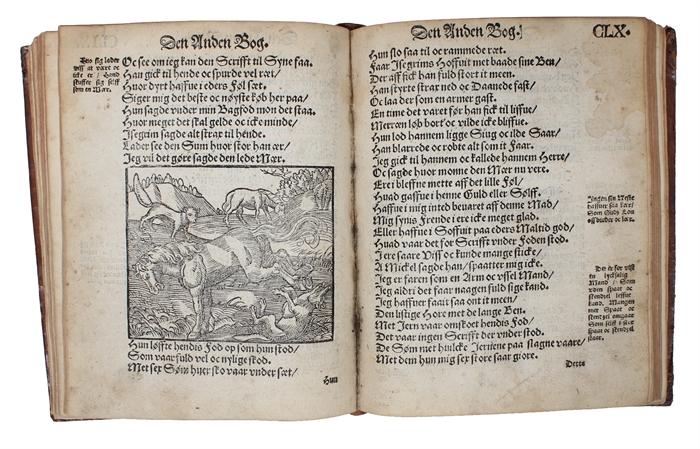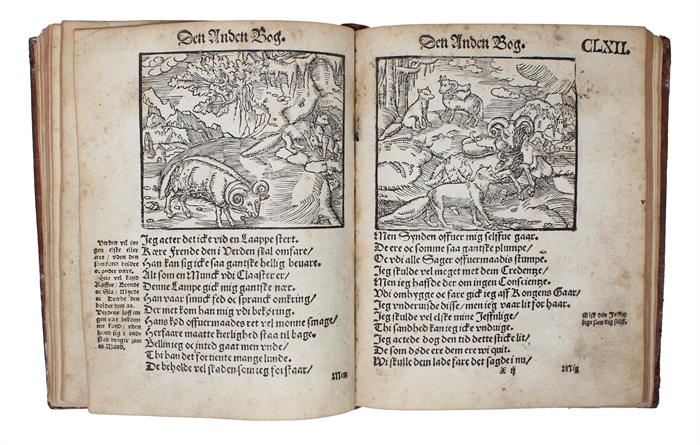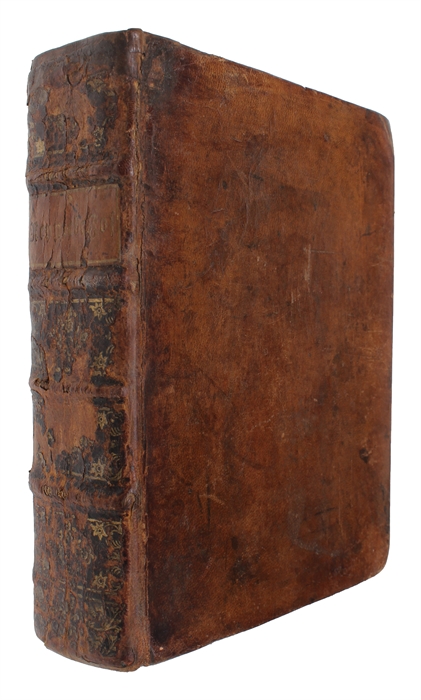FIRST DANISH TRANSLATION OF REYNARD THE FOX
EN RÆFFUE BOG - RÆVEBOGEN - REINICKE FOSS -
En Ræffue Bog som kaldes paa Tyske Reinicke Foss/ Oc er en deylig oc lystig Bog met mange skønne Historier/ lystige Rim/ Exempel/ och herlige Figurer/ som aldri føre haffuer værid paaDanske/ nu Nylige fordanskit aff Herman Weigere/ Borgere vdi Cøbnehaffn.
Lübeck, Jürgen Richolff, 1555.
4to. Senere hellæderbind (omkr. 1750). Med ophøjede bind i 5 rygfelter. Rig forgyldning, men forgyldningen delvis krakeleret. Titelfeltet med forgyldt skindtitel. Øverste kapitæl restaureret. 315 blade, heraf er 1 blad i faksimile (Qqi, - et blad i registeret). Uden det sidste blanke blad. På titelbladet er teksten trykt inden for stor figurlig træstukken ramme. Med de 36 store træsnit som er kopier efter originalerne stukket af Erhard Altdorfer i Lübecker-udgaven fra 1498. Her og der med lettere brugsspor.
The exceedingly scarce first Danish translation of the Medieval beast epic Reynard the Fox, rarely found in the trade. This is the work that introduced the Medieval animal epic into Danish literature, and it marks a decisive step in the reception of continental narrative traditions in Denmark. Circulating from the 12th-century and derived in part from Aesop, Reynard the Fox is one of the most popular and enduring beast-epics. Reynard the Fox is a collection of fables that originated in Medieval Europe, and the exact authorship is unknown. The stories were likely passed down orally before being written down in various versions over the centuries. The fables, with the wily fox as a central character, lent themselves to satire and was used by the Protestant reformers and others. "With this Reynard the Fox medieval animal fiction is introduced to Denmark. The origin poem goes back to the 12th century in France. In the 13th century the fox becomes the cunning hero in the edition by Fleming, Willem. The poem was printed 1498 in Low German in Lübeck, and in 1539 and 1549 in Rostock by Ludwig Dietz. The 1539 Rostock edition, of which incidentally only one copy is preserved in the Staatsbibliothek, hamburg, is the one used in the translation by herman veigere. The book is dated september 20, 1554, and dedicated to King Christian III.. Veigere's translation is certainly not inferior to the original. (…) The book has always been considered one of the desiderate of Danish book-collectors” (Thesaurus I,282). The translator, Herman Weigere, a Copenhagen burgher and brother of the noted medical writer Henrik Smith, based his translation on the Low German Rostock edition of 1539 printed by Ludwig Dietz (now surviving in a single copy in Hamburg). Weigere’s Danish version was completed in 1554 and dedicated to King Christian III, and printed the following year by Jürgen Richolff in Lübeck. Thesaurus 2821
Lauritz Nielsen, 1406.
Laurits Nielsen 1406.
Order-nr.: 54995

